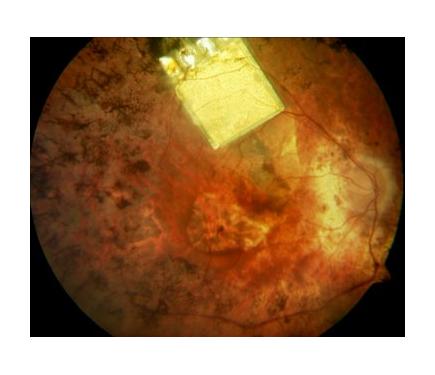
German firm, Retina Implant AG, has developed a microchip that can be implanted in a person’s eye, allowing thousands of people see again. The chip has been developed so that it can be placed under the retina and is currently going through clinical trials.
According to initial results the device has shown positive results for patients suffering from retinitis pigmentosa. The disease is a genetic cause of eventual blindness that affects 1.5 million all over the world. Retinitis pigmentosa does its damage in the retina of the eye. The back of the eye houses the retina which contains cells known as photoreceptors. These convert light into signals that travel down nerves and into to the brain. There are two types of photoreceptor cells in the eye, known as rods and cones. Rods allow peripheral and night vision while cones give one the ability to see color. Retinitis pigmentosa destroys the rods and cones, meaning no signals are sent through the nerves to the brain, leading to eventual blindness.
The chip implant corrects this problem by working as a replacement for the damaged photoreceptors and sending signals to the nerves. The chip can be implanted into the retina in one of two ways; subretinal or epiretinal.
For epiretinal implants a wireless device is placed on the top of the retina, with a wireless implant surgically implanted on top of the retina as well. This implant is fed information through a wireless connection with a camera that is placed on eye glasses that the patient wears. The surgical implant is able to use the nerve cells already present in the brain to send signals which can then be translated into images. This approach is slightly cumbersome and requires a battery along numerous parts working in concert to get results.
Retina Implant AG has developed the second method, known as subretinal implants. With this approach the chip is placed in the macula which is in the center of the retina. Retina Implant AG states that, “the macular region is believed to be the ideal location because this is where light-sensitive photoreceptor cells are located which are responsible for producing clear images in normal-sighted people.”
Interestingly, the implanted microchip also moves with the eye and thus eliminates a patient’s need to move their entire head to see items like they would with the epiretinal chip. Another factor that makes the new implant superior is that it has 1,500 light sensors which react to natural light. The power supply and other controls are placed behind the ear and connect through a wire to the eye.
Source: Business Insider
Photo: Business Insider